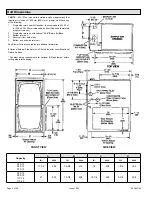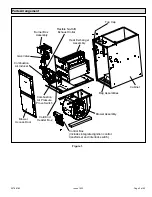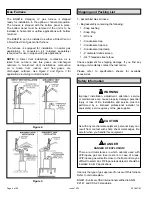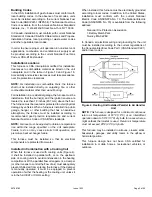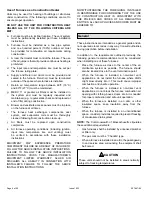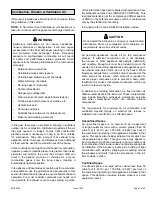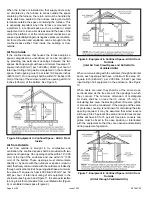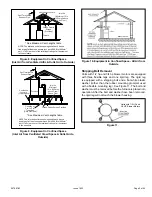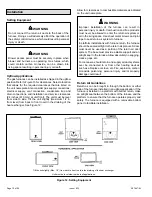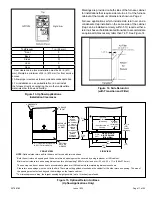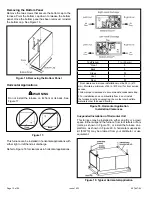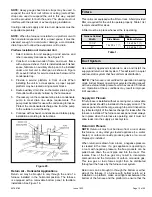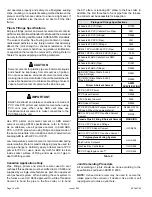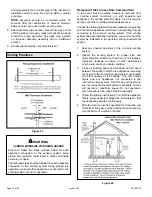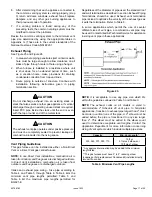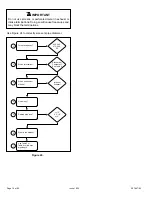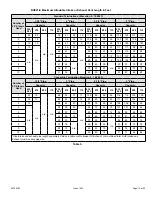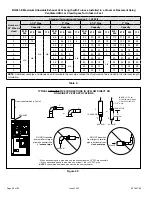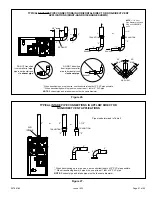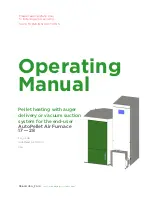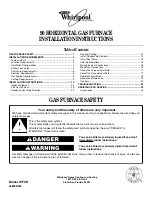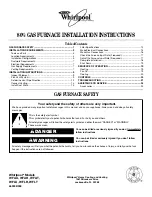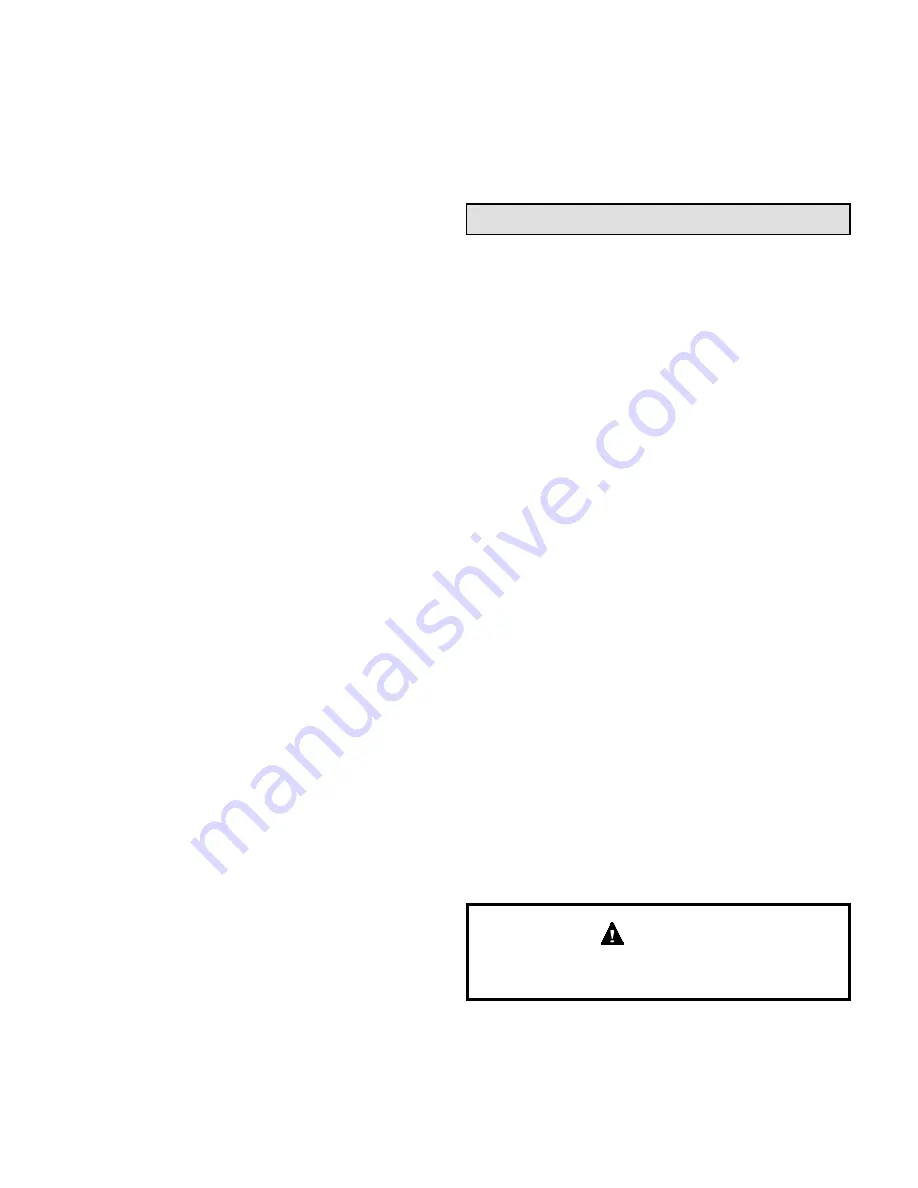
507867-02
Page 6 of 55
Issue 1933
General
These instructions are intended as a general guide and do
not supersede local codes in any way. Consult authorities
having jurisdiction before installation.
In addition to the requirements outlined previously, the
following general recommendations must be considered
when installing one of these furnaces:
•
Place the furnace as close to the center of the air
distribution system as possible. The furnace should
also be located close to the vent termination point.
•
When the furnace is installed in non-direct vent
applications, do not install the furnace where drafts
might blow directly into it. This could cause improper
combustion and unsafe operation.
•
When the furnace is installed in non-direct vent
applications, do not block the furnace combustion air
opening with clothing, boxes, doors, etc. Air is needed
for proper combustion and safe unit operation.
•
When the furnace is installed in an attic or other
insulated space, keep insulation away from the
furnace.
•
When the furnace is installed in an unconditioned
space, consider provisions required to prevent freezing
of condensate drain system.
NOTE:
The Commonwealth of Massachusetts stipulates
these additional requirements:
•
Gas furnaces shall be installed by a licensed plumber
or fitter only.
•
The gas cock must be “T handle” type.
•
When a furnace is installed in an attic, the passageway
to and service area surrounding the equipment shall
be floored.
These units should not be installed in areas normally
subject to freezing temperatures.
CAUTION
Use of Furnace as a Construction Heater
Units may be used for heating of buildings or structures
under construction, if the following conditions are met to
ensure proper operation.
DO NOT USE THE UNIT FOR CONSTRUCTION HEAT
UNLESS ALL OF THE FOLLOWING CRITERIA ARE
MET:
a. Furnace must be in its final location. The vent system
must be permanently installed per these installation
instructions.
b. Furnace must be installed as a two pipe system
and one hundred percent (100%) outdoor air must
be provided for combustion air requirements during
construction.
c. A room thermostat must control the furnace. The use
of fixed jumpers that will provide continuous heating is
prohibited.
d. The input rate and temperature rise must be set per
the furnace rating plate.
e. Supply and Return air ducts must be provided and
sealed to the furnace. Return air must be terminated
outside of the space where furnace is installed.
f. Return air temperature range between 60°F (16°C)
and 80°F (27°C) must be maintained.
g. MERV 11 or greater air filters must be installed in
the system and must be regularly inspected and
maintained (e.g., regular static checks and replaced at
end of life) during construction.
h. Blower and vestibule access panels must be in place
on the furnace at all times.
i.
The furnace heat exchanger, components, duct
system, and evaporator coils must be thoroughly
cleaned following final construction clean−up.
j.
Air filters must be replaced upon construction
completion.
k. All furnace operating conditions (including ignition,
input rate, temperature rise and venting) must
be verified in accordance with these installation
instructions.
EQUIPMENT
MAY
EXPERIENCE
PREMATURE
COMPONENT FAILURE AS A RESULT OF FAILURE TO
FOLLOW THE ABOVE INSTALLATION INSTRUCTIONS.
FAILURE TO FOLLOW THE ABOVE INSTALLATION
INSTRUCTIONS VOIDS THE MANUFACTURER’S
EQUIPMENT LIMITED WARRANTY. ALLIED AIR
DISCLAIMS ALL LIABILITY IN CONNECTION WITH
INSTALLER’S FAILURE TO FOLLOW THE ABOVE
INSTALLATION INSTRUCTIONS.
NOTWITHSTANDING THE FOREGOING, INSTALLER
IS RESPONSIBLE FOR CONFIRMING THAT THE USE
OF CONSTRUCTION HEAT IS CONSISTENT WITH
THE POLICIES AND CODES OF ALL REGULATING
ENTITIES. ALL SUCH POLICIES AND CODES MUST BE
ADHERED TO.


